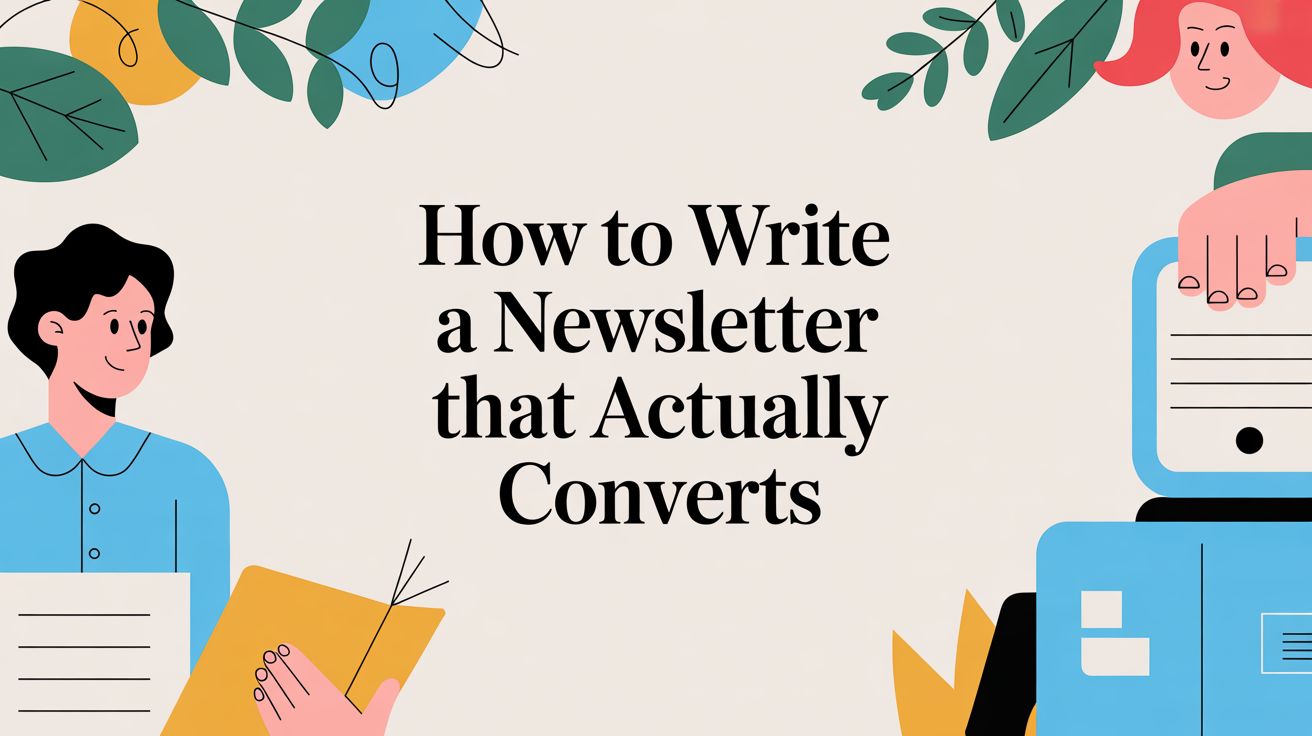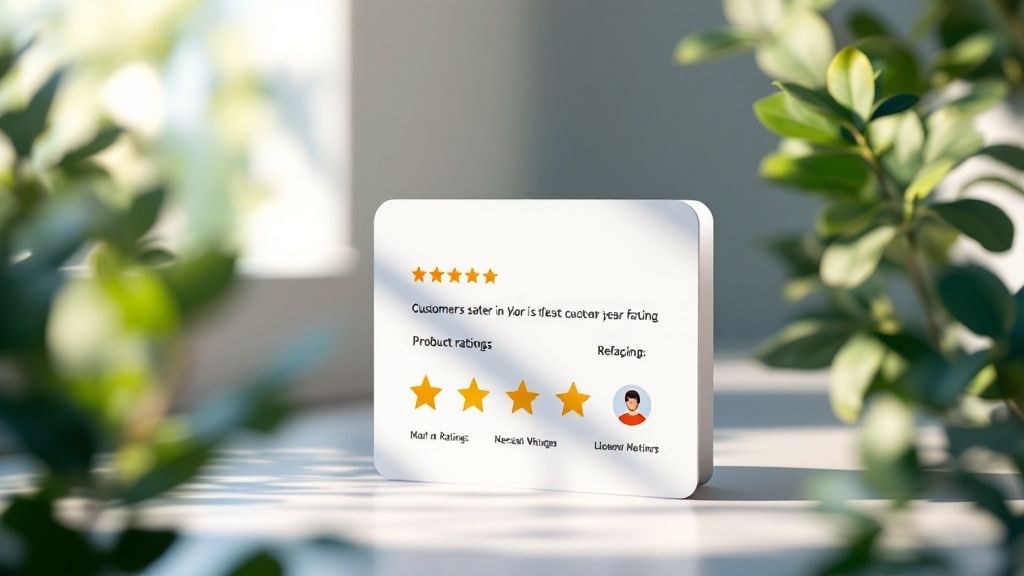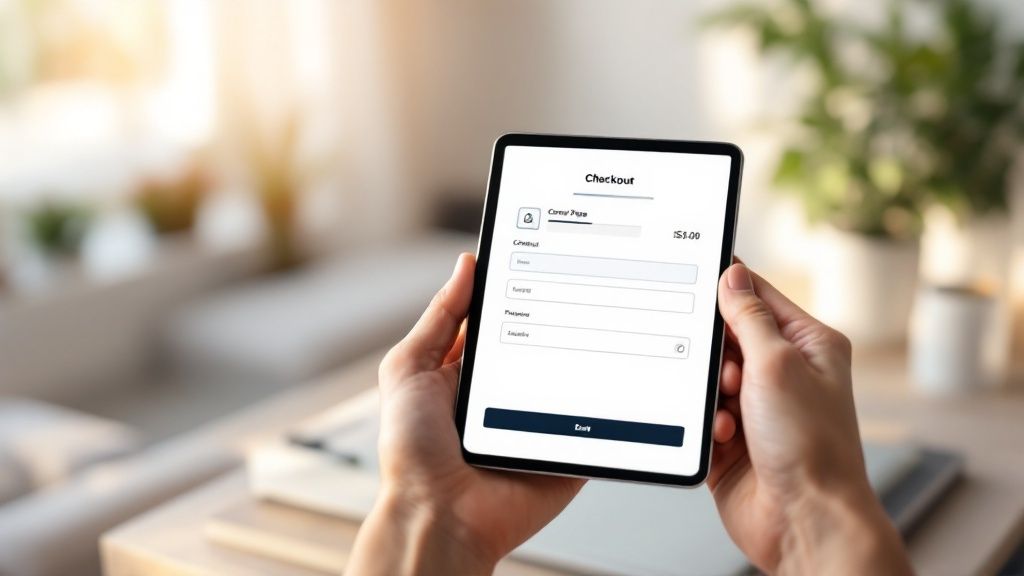
Top Tips to Improve Ecommerce Conversion Rate in 2025

In the competitive landscape of ecommerce, turning website traffic into tangible revenue is the ultimate measure of success. With the average ecommerce conversion rate hovering around a mere 2.5% and cart abandonment rates stubbornly high at nearly 70%, it's clear that simply attracting visitors isn't enough. The critical challenge isn't just getting people to your site; it's guiding them from browsing to buying. The key to unlocking significant growth lies in understanding the science of consumer behavior and strategically applying it across your entire customer journey.
This article moves beyond generic advice to provide ten actionable, psychology-driven strategies designed to directly improve your ecommerce conversion rate, enhance profitability, and build lasting customer loyalty. We will explore how to transform your Shopify store from a simple digital catalog into a high-performance conversion engine, leveraging the same behavioral economics principles that drive the world's most successful brands.
You will learn how to implement sophisticated tactics, from A/B testing and checkout optimization to advanced urgency marketing that goes far beyond basic timers. Each point focuses on practical application and measurable business impact, providing a clear roadmap to convert more visitors into loyal customers. Prepare to implement specific strategies that have a direct and immediate impact on your bottom line.
1. Harness the Science of Urgency and Scarcity
Authentic urgency and scarcity marketing is more than adding a generic timer to your product page; it's the strategic application of proven psychological principles. Grounded in behavioral economics research, concepts like the "Scarcity Principle" and Fear of Missing Out (FOMO) accelerate the customer's decision-making process by creating a compelling reason to buy now. This approach directly addresses the high cart abandonment rate by transforming hesitation into immediate action, driving revenue and protecting profit margins.
This sophisticated strategy moves beyond basic pop-ups focused on email capture to generate significant revenue. Instead of a simple countdown, advanced urgency platforms like Quikly apply the science of anticipation to create highly engaging brand "Moments." These are structured events—like time-sensitive offers, limited-inventory notifications, and exclusive product drops—that drive massive sales spikes and brand loyalty. The key is to frame scarcity as a genuine opportunity, which not only helps to improve your ecommerce conversion rate but also protects profit margins by reducing the need for broad, site-wide discounts and aids in inventory management.
How to Implement Urgency and Scarcity
To effectively integrate this strategy, focus on authenticity and value. Avoid manipulative language and ensure your claims are backed by real data.
- Use Real Inventory Data: Displaying messages like "Only 3 left in stock" is powerful, but only when it reflects your actual inventory levels. For Shopify merchants, this is an actionable takeaway: leverage apps that sync directly with your stock counts to ensure credibility.
- Segment Your Audience: Don't show the same urgency message to everyone. Use your Klaviyo or SMS platform integrations to send targeted, time-sensitive offers to specific customer segments, such as VIPs or those who have previously viewed an item.
- A/B Test Psychological Triggers: Move beyond basic timers. A/B test different behavioral triggers. Does a quantity-based scarcity message ("Low Stock") outperform a time-based one ("Offer ends at midnight")? The answer will vary by audience and product.
- Launch Tiered Offers: Create a sense of anticipation by rewarding the fastest customers with the best deals. This gamified approach, a core component of Quikly's "Moments," creates a wave of excitement and drives immediate sales.
By grounding your tactics in real scarcity and consumer psychology, you create a powerful and ethical tool for boosting conversions and revenue. To dive deeper into the nuances of this powerful tactic, you can explore advanced urgency marketing strategies for Shopify.
2. Implement a Strategic Abandoned Cart Recovery Funnel
With an industry benchmark cart abandonment rate nearing 70%, failing to re-engage these high-intent shoppers is a significant revenue leak. A strategic abandoned cart recovery funnel is not just about sending a single reminder; it's a sophisticated, automated sequence designed to address common purchase barriers like shipping costs, payment friction, or simple distraction. This approach transforms a lost sale into a recovered conversion, directly impacting your bottom line and customer lifetime value.

This tactic moves beyond a generic "You left something behind" email to become a powerful, personalized revenue stream. Case studies show that brands can recover a significant portion of abandoned carts through targeted email campaigns. The key is to view abandonment not as a failure, but as an opportunity to reinforce your value proposition, address objections, and guide the customer back to a seamless checkout experience. Properly executed, this is one of the most effective ways to improve your ecommerce conversion rate with minimal effort.
How to Implement Abandoned Cart Recovery
To build an effective recovery sequence, focus on timeliness, personalization, and a compelling reason to return. Ensure your strategy is multi-channel and data-driven.
- Timely and Automated Sequences: Your first action item is to send the first email within 1-2 hours of abandonment to catch the customer while the purchase is still top-of-mind. Shopify Plus merchants can easily automate a multi-email flow using platforms like Klaviyo.
- Incorporate Urgency and Scarcity: Combine this tactic with urgency by including a limited-time offer in your second or third email, such as "Complete your purchase in 24 hours for 10% off." This creates a powerful incentive to act now.
- Use High-Quality Visuals: Remind customers what they're missing. Include large, high-quality images of the exact products left in their cart to reignite their initial desire.
- A/B Test Everything: Continuously test subject lines ("Did you forget something?" vs. "Your items are waiting"), timing, and offer types (free shipping vs. a percentage discount) to optimize performance for your specific audience.
By systemizing your approach, you can turn abandoned carts from a frustrating metric into a reliable source of recovered revenue. To build a more robust system, you can explore the top strategies for Shopify cart abandonment recovery.
3. Social Proof Implementation
Social proof is the strategic use of consumer influence to build trust and validate purchasing decisions. This concept, popularized by Robert Cialdini's research in behavioral psychology, is based on the tendency for people to conform to the actions of others when uncertain. By showcasing reviews, user-generated content (UGC), and endorsements, you signal to new visitors that your products are vetted and valuable, effectively reducing friction in the buying process and directly addressing conversion hesitation.

This strategy moves beyond simple star ratings to become a core part of the brand narrative. For instance, Amazon's comprehensive review system is a major driver behind purchasing decisions, while beauty brand Glossier built its billion-dollar valuation largely on authentic user-generated content shared across social media. Similarly, B2B companies like Basecamp display logos of their well-known customers to establish enterprise-level credibility. When implemented correctly, social proof provides the impartial validation needed to improve your ecommerce conversion rate by transforming shopper uncertainty into buyer confidence.
How to Implement Social Proof
To leverage social proof effectively, focus on authenticity and visibility. The goal is to integrate these trust signals seamlessly into the customer journey where they will have the most impact.
- Display Reviews Prominently: Your immediate takeaway is to place customer reviews and star ratings directly on product pages, close to the "Add to Cart" button. For Shopify stores, apps like Yotpo or Loox can automate this process and even showcase visual UGC.
- Respond to All Feedback: Actively manage and respond to both positive and negative reviews. A thoughtful response to a negative comment shows that you value customer feedback and can often turn a poor experience into a demonstration of excellent customer service.
- Use Visuals for Authenticity: Incorporate customer photos and videos into testimonials. Visual proof is significantly more compelling and harder to fake than text-only reviews, building a deeper layer of trust.
- Showcase Social Validation: Integrate social media feeds or widgets on your site that display customer posts mentioning your brand or using your products. This creates a live, dynamic stream of genuine endorsements.
By systematically integrating these elements, you tap into the powerful human need for consensus, making it easier for customers to trust your brand and complete their purchase. For a deeper look into this topic, you can discover social proof ideas that go beyond the traditional testimonial.
4. Checkout Process Optimization
The checkout process is the final, most critical step in the customer journey, yet it's where an average of 70% of ecommerce carts are abandoned. Checkout process optimization is the systematic improvement of this final stage by removing friction, eliminating unnecessary steps, and building a seamless path from cart to confirmation. A clunky, confusing, or lengthy checkout directly undermines every other effort made to attract and engage customers, making its optimization one of the highest-impact ways to improve your ecommerce conversion rate.

This strategy moves beyond aesthetics to focus on the psychology of user experience, reducing cognitive load and building trust at the moment of purchase. For instance, Amazon's patented 1-Click ordering set the gold standard by removing nearly all friction. Modern platforms like Shopify have replicated this success with Shop Pay, which can reduce checkout time by over 70% for returning customers by securely saving their payment and shipping information. The goal is to make completing the purchase feel like an effortless, secure, and logical conclusion to the shopping experience, transforming hesitation into a completed sale.
How to Implement Checkout Process Optimization
To effectively streamline your checkout, prioritize speed, clarity, and trust. Every field, click, and page load is an opportunity for a customer to leave.
- Offer Guest Checkout: Forcing account creation is a major conversion killer. As an actionable step, provide a prominent guest checkout option. Case studies show retailers saw a notable increase in revenue after implementation.
- Minimize Form Fields: Only ask for essential information. Do you really need a phone number or a second address line? Each additional field increases friction and the likelihood of abandonment.
- Provide Multiple Payment Options: Cater to user preferences by offering credit cards, PayPal, and digital wallets like Apple Pay and Google Pay. This simple step removes a significant barrier to purchase.
- Display Trust Signals: Prominently feature security badges (e.g., SSL certificates, Norton) and transparently display shipping costs and return policies. This alleviates last-minute anxiety and reinforces the credibility of your store.
5. Personalization and Product Recommendations
In an era of endless choice, personalization is no longer a luxury; it's a fundamental expectation. This strategy moves beyond generic marketing by using customer data, browsing behavior, and AI algorithms to deliver tailored shopping experiences. Grounded in the psychological principle of the "Cocktail Party Effect," where individuals tune in to information relevant to them, personalization cuts through the noise to present customers with exactly what they want, often before they even realize it. It’s a direct antidote to choice paralysis and a key driver to improve ecommerce conversion rate.
This isn't just about adding a customer's first name to an email. True personalization, powered by platforms like Dynamic Yield and Salesforce, reshapes the entire customer journey. For example, Amazon’s iconic "Customers who bought this also bought" feature is responsible for an estimated 35% of its revenue. Similarly, Sephora's personalized beauty recommendations have been shown to improve conversion by 50% by making customers feel understood. This level of curated experience transforms a standard transaction into a guided, high-converting journey, significantly boosting average order value and customer loyalty.
How to Implement Personalization and Product Recommendations
Effective personalization requires a strategic approach that balances data utilization with user privacy. The goal is to be helpful, not intrusive, by delivering value at every touchpoint.
- Start with Behavioral Triggers: Your first action item is to begin with simple yet powerful automations. Recommend products based on a user's browsing history ("Recently Viewed") or cart contents. This is a foundational step that can be implemented quickly.
- Segment Your Audience for Targeted Content: Use your CRM or email platform data to create distinct customer segments. A first-time visitor should see a different homepage banner than a loyal VIP customer. Effective segmentation is crucial for delivering relevant messages.
- Implement Personalized Emails: Your email campaigns are a prime opportunity for personalization. Go beyond a name token and include dynamic product blocks based on past purchases or abandoned cart items. This makes each communication feel like a one-to-one conversation.
- A/B Test Recommendation Algorithms: Test different recommendation logics. Does a "Trending Now" block on a product page outperform a "You Might Also Like" block? The optimal algorithm will vary based on your product catalog and audience.
By creating a more relevant and engaging shopping experience, you meet modern consumer expectations and build a powerful engine for revenue growth. To learn more about creating effective customer groups, you can discover these 7 customer segmentation examples.
6. Mobile Optimization and Responsive Design
With mobile commerce projected to account for over 44% of all retail ecommerce sales in the U.S., a mobile-first approach is no longer optional; it's a fundamental requirement for survival and growth. Mobile optimization is the comprehensive process of ensuring your website delivers a seamless, fast, and intuitive experience on smartphones and tablets. This goes beyond simple responsive design, encompassing touch-friendly interfaces, accelerated loading times, and streamlined checkout processes specifically for small screens. Neglecting this directly impacts your ability to improve your ecommerce conversion rate, as a clunky mobile experience is a primary driver of site abandonment.
Pioneered by figures like Luke Wroblewski and enforced by Google’s "Mobile-First Indexing," this strategy prioritizes the mobile user journey from the ground up. The results are undeniable: Domino's saw a 28% increase in mobile orders after optimizing their platform, while fashion giant H&M improved its mobile conversion rate by 20% by adopting a mobile-first design. These brands understand that a frictionless mobile experience reduces cognitive load and removes barriers to purchase, converting browsing intent into completed sales. For Shopify merchants, this means leveraging mobile-responsive themes and optimizing every touchpoint for on-the-go shoppers.
How to Implement Mobile Optimization
Effective mobile optimization requires a dedicated focus on speed, simplicity, and accessibility. Treat your mobile site as the primary version of your store, not an afterthought.
- Prioritize Performance and Speed: Compress images and leverage browser caching to ensure your pages load in under three seconds on a mobile connection. A one-second delay can decrease mobile conversions by up to 20%.
- Design for Thumbs: Use large, easily tappable buttons and interactive elements. Ensure there is ample space between links to prevent accidental clicks, a common frustration for mobile users.
- Simplify Navigation and Checkout: Implement a collapsible "hamburger" menu and a persistent search bar. The mobile checkout process should be radically simplified, requiring minimal fields and offering mobile-native payment options like Apple Pay and Google Pay.
- Test on Real Devices: An immediate takeaway is to go beyond emulators. Test your site's full user flow on actual iOS and Android devices to identify real-world usability issues that simulations might miss.
By building an experience tailored to the context and constraints of mobile devices, you cater to the modern consumer's shopping habits and create a direct path to higher conversions. To learn more about how mobile design impacts user experience and sales, you can explore Google's mobile-friendly testing tool.
7. Live Chat and Customer Support Integration
Integrating real-time customer support isn't just a service feature; it's a powerful conversion tool that humanizes the digital shopping experience. By providing immediate assistance via chat widgets, AI chatbots, and live agents, you can resolve customer doubts and overcome purchase objections at the most critical moments. This strategy directly tackles the friction points that lead to cart abandonment, turning potential lost sales into completed transactions.
This approach transforms your website from a static catalog into a dynamic, consultative environment. Brands like Zappos built their entire reputation on exceptional customer support, making it a core part of their value proposition. More tactically, case studies show that implementing live chat can significantly reduce cart abandonment and increase conversions. The key is to be present and helpful, providing the same level of assistance a customer would expect in a physical store, which is a proven way to improve your ecommerce conversion rate.
How to Implement Live Chat and Customer Support
To effectively deploy live chat, focus on being proactive and deeply knowledgeable without being intrusive. Your goal is to be a helpful guide, not an aggressive salesperson.
- Use Proactive, Trigger-Based Messaging: Don't wait for the customer to ask for help. A key action is to configure your chat tool, like those from Zendesk or Intercom, to trigger a message on high-intent pages (e.g., checkout) or after a user has idled on a product page for a set time.
- Train Agents on Deep Product Knowledge: Ensure your support agents are experts on your products. They should be able to answer detailed questions about sizing, materials, compatibility, and use cases to build confidence and trust.
- Integrate Chat History with Customer Profiles: Connect your chat platform with your CRM or email service provider like Klaviyo. This allows agents to see a customer's past purchases and browsing history, enabling highly personalized and effective support.
- Offer Multiple Contact Options: While live chat is powerful, always provide other support channels like email or a help center. This caters to different customer preferences and ensures no one feels forced into a single communication method.
8. Trust Signals and Security Features
In an online environment where consumers cannot physically inspect products or interact with sales staff, building digital trust is paramount. Trust signals and security features are visual cues strategically placed throughout your site to reassure customers that their personal information is safe and your business is legitimate. This directly combats purchase anxiety and hesitation, two major contributors to cart abandonment. It’s about creating a psychological safety net that allows users to proceed with a transaction confidently, thereby helping to improve your ecommerce conversion rate.
This strategy moves beyond simply having an SSL certificate; it's about visibly communicating security and reliability at every critical step. While a padlock in the URL bar is standard, prominently displayed badges from Norton or McAfee provide powerful, recognizable third-party validation. Brand-level trust signals, such as clear return policies and satisfaction guarantees, also play a crucial role. Even Shopify's native "Powered by Shopify" badge in the footer provides an underlying layer of platform credibility. These signals work together to reduce perceived risk, a crucial step in converting a hesitant browser into a loyal customer.
How to Implement Trust Signals and Security Features
To effectively integrate this strategy, focus on relevance and placement. Your trust signals must be visible at the moments when customers feel the most vulnerable, such as when creating an account or entering payment details.
- Place Badges Strategically: Display recognizable security badges (e.g., Norton, McAfee Secure) directly on checkout pages, near "Add to Cart" buttons, and in the site footer. This constant reassurance helps dismantle subconscious barriers to purchase.
- Highlight Guarantees: Don't bury your money-back guarantees or return policies. Your immediate action item is to feature them prominently on product pages, in your site header, and during the checkout process to address risk aversion head-on.
- Leverage Social Proof: Customer reviews, testimonials, and user-generated content are powerful trust signals. Integrating these near product descriptions provides authentic validation from other buyers.
- Ensure Transparency: Make your privacy policy, terms of service, and contact information easy to find. Accessibility to these documents signals that you are a legitimate and transparent business.
9. Urgency and Scarcity Tactics
Authentic urgency and scarcity marketing is a powerful psychological tool that accelerates the customer's decision-making process. Based on Robert Cialdini's "Scarcity Principle" and the inherent Fear of Missing Out (FOMO), this strategy provides a compelling reason for customers to purchase now. It directly addresses high cart abandonment rates by transforming hesitation into decisive action, a key factor to improve your ecommerce conversion rate.
This approach is about creating genuine value, not manufacturing fake pressure. It moves beyond simple countdown timers to create meaningful purchase incentives. For example, Booking.com’s "Only 2 rooms left" messages, Amazon’s "Lightning Deals," and Supreme’s legendary product drops are all built on this model. They create massive sales spikes and brand loyalty by framing scarcity as a genuine and fleeting opportunity for the consumer. This method is highly effective for converting on-the-fence shoppers without resorting to broad, margin-eroding discounts.
How to Implement Urgency and Scarcity
To integrate this strategy successfully, focus on authenticity and providing clear value. Your claims must be real to build long-term trust and avoid conditioning customers to ignore your messaging.
- Use Real Inventory Data: Displaying messages like "Low Stock" or "Only 3 left" is incredibly effective when tied to actual inventory levels. Many Shopify apps can sync directly with your stock counts to automate this.
- Create Time-Bound Offers: Establish clear deadlines for promotions, such as "Deal ends at midnight" or "24-hour flash sale." This is the core model for platforms like Groupon and is perfect for driving immediate sales.
- Launch Exclusive Drops: Limit the availability of a product to a specific quantity or a short time window. This "drop" model creates anticipation and a rush to buy, fostering a loyal community around your brand.
- Segment Your Urgency: Use your email or SMS platform to send targeted, time-sensitive offers to specific customer segments. A "VIP-only 12-hour sale" can make your best customers feel valued and drive significant revenue.
By grounding your tactics in real scarcity and consumer psychology, you create an ethical and powerful tool for boosting conversions. These strategies also create a sense of excitement and demand that strengthens your brand's appeal over time.
10. Website Speed and Performance Optimization
In the digital marketplace, speed is not just a feature; it's the foundation of the user experience. Website speed optimization is the technical process of making your e-commerce store load as quickly as possible. This directly impacts user satisfaction and buying behavior, as even a one-second delay can cause a significant drop in conversions. Slow-loading pages lead to higher bounce rates, reduced session durations, and ultimately, lost revenue.
Optimizing performance is a critical strategy to improve your ecommerce conversion rate because it directly addresses user impatience. Data consistently proves the ROI of speed: Walmart saw a 2% conversion increase for every one-second improvement, while Amazon calculated that a mere 100ms delay could cost them 1% in sales. These figures demonstrate that technical performance is not an IT issue; it's a core business and conversion metric. A faster, more responsive site creates a seamless shopping journey, reducing friction and encouraging customers to complete their purchases.
How to Implement Website Speed Optimization
To effectively boost your site's performance, focus on a multi-faceted approach that addresses images, code, and hosting infrastructure. The goal is to reduce the amount of data the browser has to download and process.
- Optimize and Compress Images: An immediate action item is to use tools like TinyPNG or Shopify apps such as Crush.pics to compress images without sacrificing visual quality. Implement next-gen formats like WebP where possible.
- Leverage Lazy Loading: Configure your site to only load images and videos when they are about to enter the user's viewport. This drastically reduces initial page load time for content "below the fold."
- Minimize Code and HTTP Requests: Use tools to minify your CSS, JavaScript, and HTML files, which removes unnecessary characters from the code. Consolidate files to reduce the number of individual requests the browser must make.
- Implement a Content Delivery Network (CDN): A CDN like Cloudflare stores a cached version of your site on servers around the world, delivering content to users from the geographically closest location, which significantly speeds up load times.
- Choose Performance-Optimized Hosting: Your hosting plan is the engine of your store. For high-traffic sites, especially on platforms like Shopify Plus, ensure your hosting solution can handle traffic spikes without slowing down.
10 Key Strategies for Ecommerce Conversion Improvement
| Item | Implementation Complexity | Resource Requirements | Expected Outcomes | Ideal Use Cases | Key Advantages |
|---|---|---|---|---|---|
| A/B Split Testing | Moderate to high; requires technical expertise | Significant traffic & statistical tools | Data-driven insights; measurable ROI | Testing design changes and content | Eliminates guesswork; continuous improvement |
| Abandoned Cart Recovery | Moderate; needs tracking & automation setup | Email marketing, retargeting tools | Recovers lost sales; increases revenue | Ecommerce with cart abandonment issues | Automated; high ROI; personalized experience |
| Social Proof Implementation | Low to moderate; requires review management | Customer reviews, UGC tools | Builds trust; boosts conversions | Trust-building and credibility | Cost-effective; reduces purchase anxiety |
| Checkout Process Optimization | High; complex integration & security compliance | Payment gateways, design resources | Reduced abandonment; improved conversions | Streamlining final purchase steps | Direct impact on conversions; better UX |
| Personalization & Recommendations | High; requires AI & data analysis capabilities | Data collection infrastructure & AI tools | Increased engagement and revenue | Personalized shopping experiences | Higher average order value; competitive advantage |
| Mobile Optimization | Moderate to high; ongoing optimization needed | Responsive design and development | Improved mobile UX and conversions | Mobile-first markets | Captures mobile traffic; SEO benefits |
| Live Chat & Customer Support | Moderate; requires staffing or AI investment | Chat platforms, trained staff | Increased satisfaction and conversions | Real-time customer assistance | Immediate help; reduces abandonment |
| Trust Signals & Security | Low to moderate; requires certification management | Security certificates, badges | Builds confidence; reduces hesitation | Checkout and trust-critical areas | Builds credibility; reduces fraud risk |
| Urgency & Scarcity Tactics | Low to moderate; simple to implement but requires careful messaging | UI elements, promotional systems | Increased immediate sales | Time-sensitive offers and promotions | Creates buying urgency; boosts short-term revenue |
| Website Speed Optimization | High; technical expertise required | Dev resources, hosting & CDN | Reduced bounce rates; better SEO & conversions | All ecommerce sites | Direct conversion impact; cost savings |
Beyond Conversion: Building a Resilient Ecommerce Business
The journey to consistently improve your ecommerce conversion rate is not a final destination; it's a dynamic and continuous cycle of refinement. We've explored a comprehensive toolkit of strategies, moving from foundational pillars like A/B testing and site speed optimization to the sophisticated application of consumer psychology through advanced urgency and scarcity tactics. Each element, whether it's optimizing your checkout flow or implementing powerful social proof, contributes to a larger, interconnected system designed to enhance the customer experience and drive revenue.
The key takeaway is to view conversion rate optimization (CRO) not as a series of isolated tasks but as an integrated business philosophy. Simply installing a basic countdown timer is not the same as orchestrating a high-impact product drop that leverages the psychological principles of anticipation and social proof. The former is a tactic; the latter is a strategy that builds brand equity and customer loyalty.
From Tactics to an Integrated Growth Engine
For ambitious brands, especially those on Shopify and Shopify Plus, the goal transcends a simple percentage point increase. It’s about building a resilient, profitable, and customer-centric operation. This requires a shift in mindset:
- Move Beyond Basic Metrics: While conversion rate is a critical indicator, true success lies in understanding its impact on profitability and customer lifetime value. To truly build a resilient ecommerce business and understand the full impact of your conversion strategies, it's crucial to track not only conversion rates but also other key website metrics for growth.
- Embrace Sophisticated Psychology: Don't just create urgency; create an event. Advanced urgency marketing, as practiced through platforms like Quikly, is about crafting compelling brand moments. It replaces generic, often-ignored pop-ups with engaging campaigns that generate genuine excitement and protect your profit margins by avoiding deep, site-wide discounts.
- Prioritize the Customer Journey: Every strategy, from personalized product recommendations to seamless mobile design, should be viewed through the customer's eyes. A frictionless, trustworthy, and engaging experience is the most powerful conversion tool you have. It turns one-time buyers into repeat customers and brand advocates.
Your Actionable Path Forward
Mastering these concepts transforms your approach from reactive to proactive. Instead of just recovering abandoned carts, you're building a checkout process so seamless that abandonment rates plummet. Instead of just displaying reviews, you're weaving social proof into the fabric of the shopping experience to build unshakable trust.
The ultimate value is in creating an ecommerce ecosystem that thrives by putting the customer experience first, backed by data-driven decisions and a deep understanding of human behavior. By implementing these strategies thoughtfully, you are not just chasing a higher number; you are architecting a more durable and profitable future for your brand. This holistic approach is how you will not only improve your ecommerce conversion rate but also build a business that stands the test of time.
Ready to transform your promotional strategy from basic timers to sophisticated, revenue-driving events? Discover how Quikly uses the science of urgency and anticipation to create high-impact campaigns that captivate customers and boost conversions. Explore Quikly and see how top brands are building excitement and driving predictable growth.

The Quikly Content Team brings together urgency marketing experts, consumer psychologists, and data analysts who've helped power promotional campaigns since 2012. Drawing from our platform's 70M+ consumer interactions and thousands of successful campaigns, we share evidence-based insights that help brands create promotions that convert.
